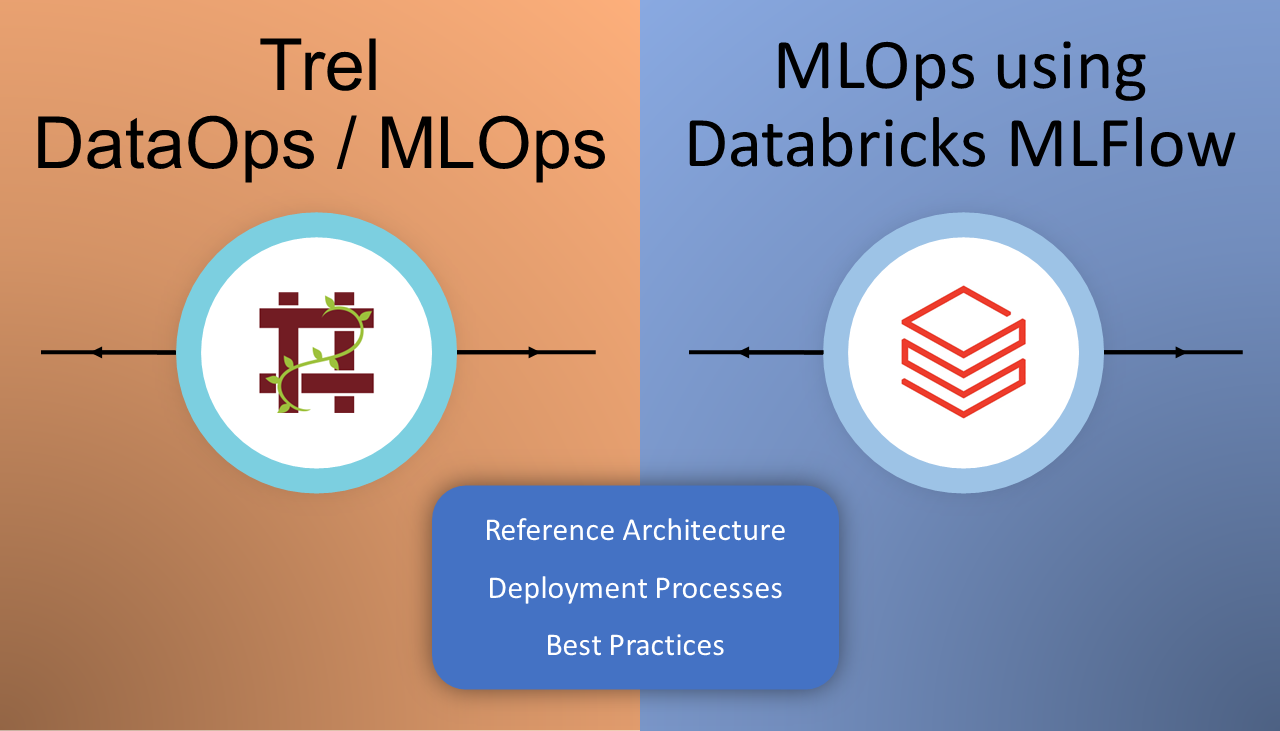Introduction
In the complex landscape of data engineering, teams routinely grapple with challenges like data corruption, resulting from concurrent writes or overwrites, and data incompleteness, where valid data is erroneously overwritten, creating gaps. Other common hurdles include cascading failures, where failures in one part of the system precipitate additional failures downstream, severely impacting operational efficiency and scalability. Traditional methods, reliant on mutable tables and scheduled batch jobs, often fall short in addressing these issues effectively, leading to inefficiencies, data reliability challenges and increased maintenance burdens.
Adopting best practices such as immutable data storage, rigorous data identity cataloging, and automation driven by data availability can significantly mitigate these risks. These practices ensure data integrity, enhance operational reliability, and streamline workflows. Implementing these best practices is made seamless with Trel, providing a robust framework for overcoming typical data engineering challenges.
Exposing Data Reliability Challenges: A Look at Traditional Data Engineering Practices
Before delving into the specific issues that plague data engineering pipelines, it’s essential to understand the context in which these problems arise. Traditional data engineering practices often hinge on mutable data models and time-based job scheduling. These foundations, although widely adopted, introduce a range of vulnerabilities that can compromise data integrity, completeness, and utility. By examining the intrinsic flaws in these methods, we can better appreciate the necessity for innovative solutions involving certain best practices like those offered by Trel. Let’s explore the major challenges inherent to conventional data engineering practices, focusing on the pitfalls of mutable tables and scheduled jobs that fail to account for the actual data state.
Data Corruption
Data corruption occurs when unintended changes are made to data during processing or storage, leading to discrepancies and unreliable outputs.
Example scenario: In a typical ETL operation, two jobs simultaneously write to the same dataset. One job corrupts a portion of the data due to an encoding error unrecognized by the system.
Impact: For the data engineer, this means extra hours or days spent identifying and correcting errors, often under the pressure of tight deadlines. Organizationally, it leads to mistrust in data outputs, affecting decision-making processes.
Challenge: Traditional mutable datasets complicate the tracking and reversing of such corruptions, as changes are often overwritten without traceability.
Data Incompleteness
This issue arises when data necessary for analysis is missing, often due to errors in data collection or processing workflows.
Example scenario: An update job fails midway, leaving the dataset only partially updated. The failure is due to a transient network error that disrupts the job’s connection to the database.
Impact: Data engineers face a laborious task to revert datasets to their original state before a successful update can occur, consuming significant time and resources. For the organization, decisions made on incomplete data can lead to strategic missteps.
Challenge: Recovery and validation processes in mutable environments are cumbersome and error-prone, lacking robust mechanisms to ensure data completeness.
Incomplete Data Utilization
Occurs when the above problem is not resolved on time and the incomplete data is used in analysis, often because the data’s full context is not considered.
Example scenario: Scheduled jobs execute without verifying the completeness and integrity of input data, leading to analyses based on outdated or partial datasets.
Impact: Data engineers must debug and redesign workflows, a time-consuming process that diverts focus from innovation. Incompletely utilized data can result in poor business insights, affecting competitive advantage.
Challenge: Traditional scheduling mechanisms lack dynamic checks that adapt to the data’s current state, leading to repeated errors and inefficient data use.
Inaccurate Date Inputs
Jobs often fetch incorrect datasets for processing due to timing and scheduling issues.
Example scenario: A report job is scheduled to process data specifically for 6/10. However, due to delays, the job doesn’t run until 6/11, by which time the table already includes data for 6/11. This causes the report to inadvertently include data from 6/11, leading to incorrect results.
Example scenario 2: A scheduled job B loads data every day to a table T. Job C filters data within T for a 30 day window and runs a report. Job B fails for 6/5 and by good design, Job C does not trigger. However, next day, Job B loads 6/6 successfully and Job C runs for 6/6, with 6/5 missing in the 30 day window, producing incorrect reporting.
Impact: Data engineers need to implement additional checks and balances to ensure data accuracy, complicating workflows. For the organization, this leads to decisions made on outdated or incorrect information.
Challenge: Manually ensuring the accuracy of date inputs in environments with numerous data sources and schedules is highly prone to error and inefficiency.
Cascading Failures
A single failure in one part of the system triggers a series of failures across interconnected jobs, significantly disrupting operations.
Example scenario: A critical data validation job fails, causing subsequent jobs dependent on this data to either fail or produce erroneous outputs, magnifying the initial problem.
Impact: Cascading failures can halt entire data operations, requiring extensive coordination and troubleshooting to resolve. This not only disrupts daily operations but also can lead to significant financial losses due to downtime and missed opportunities. It also hinders scalability as the interdependencies in larger systems magnify the effects of a single point of failure, making it difficult for data teams to collaborate effectively and resulting in the formation of data silos as a defensive measure against such vulnerabilities.
Challenge: Traditional systems often lack robust dependency management and failover mechanisms, making recovery slow and preventing effective scaling of data operations.
Duplicate Runs
These occur when the same processing job is executed multiple times, leading to redundancy and inefficiency.
Example scenario: A job triggers twice due to a misconfiguration in the job scheduler, processing the same data set repeatedly and creating duplicate entries.
Impact: While avoiding duplicate runs is crucial, data engineers must ensure that the systems can handle reruns predictably and maintain data correctness. This requires sophisticated job management systems that provide idempotency—ensuring that operations can be performed repeatedly without changing the result beyond the initial application.
Challenge: Traditional tools often do not provide the necessary mechanisms to manage duplicate and repeated runs effectively, leading to frequent operational inefficiencies and data inconsistencies.
Best Practices: Solving Data Engineering Challenges
Each of the challenges discussed can significantly hinder the effectiveness and efficiency of data engineering efforts. Addressing these pervasive issues requires innovative solutions grounded in immutable data, automated processes based on data availability, and a robust cataloging system that enhances data integrity and traceability. By embracing these best practices, data teams can solve the outlined problems and streamline the path to robust data engineering and science operations.
Immutable Data: The Foundational Best Practice
Immutable data practices are a cornerstone in modern data engineering, ensuring that once data is written, it cannot be modified or deleted. This approach is pivotal in maintaining data integrity and reliability across various data operations.
Importance of Immutable Data
Immutable data is crucial in scenarios where data accuracy and consistency are paramount. By preventing any changes to existing data, immutability ensures that each dataset remains historically accurate and unaltered. This is particularly important in environments where data serves as a critical source of truth for decision-making and reporting. Immutable data practices protect against accidental or malicious modifications, maintaining the original state of data as it was captured.
Applications of Immutable Data
- Data Loading: When loading data, immutability involves writing incoming data to new, unique tables. This method ensures that load failures do not impact existing data, as no in-place data modifications occur. Whether the data load is successful or fails, the integrity of previously stored data remains intact.
- Job Execution: For data transformation or analysis jobs, outputs are directed to new tables rather than modifying existing ones. This segregation ensures that the original data inputs are not altered during job execution. If a job fails, it does not compromise the integrity of the input data. This practice is essential not only for maintaining data accuracy across different job runs (including reruns and duplicates on the same datasets) but also for enabling reliable parallel processing and testing of data transformations.
Challenges of Implementing Immutable Data
While immutable data offers significant benefits, it requires additional effort, particularly in managing the proliferation of data tables created by continuous new writes. Each new operation or job run that generates a new dataset amplifies the volume of data storage required and complicates data management. Especially when many of these tables can be invalid and some of these tables have the same purpose. Tracking these multiple versions and tables without a robust system can lead to data sprawl, making it difficult to locate and manage specific datasets effectively.
In the next section, we will discuss how data snapshot catalogs and identity systems help in managing these challenges, ensuring that the benefits of immutable data can be fully realized without overwhelming data teams.
Data Snapshot Catalog with Data Identity
In data engineering, managing the lifecycle and integrity of data is crucial. To facilitate best practices related to data state tracking, Trel introduces a robust solution through its snapshot catalog system, which plays a pivotal role in maintaining data accuracy and availability. This system is designed to manage data snapshots effectively by organizing them into a structured catalog, ensuring that only the most relevant and accurate versions of data are accessible for operations and analysis.
Four Dimensions of Data Identity
The effectiveness of the snapshot catalog hinges on the precise definition of data identity, which Trel structures along four key dimensions: Table name, Instance, Label, and Repository. Each dimension serves a strategic purpose:
- Table Name: Specifies the dataset type or class, facilitating quick identification and appropriate handling of data types.
- Instance: Marks the dataset with a specific temporal or logical instance, typically a date, ensuring traceability over time.
- Label: Indicates the environment or experiment the data is associated with, allowing for segmented analysis and controlled testing scenarios.
- Repository: Defines where the data is stored and under what access conditions, crucial for data security and compliance.
These dimensions ensure that each dataset in the catalog can be uniquely identified, eliminating ambiguities and redundancies that often plague large data systems.
Tying Back to Immutable Data
Commitment to immutable data is integral to the snapshot catalog’s functionality. For making each dataset immutable, we ensure that once data is written, it won’t be altered. All updates are made in a copy which is then added to the catalog with an appropriate identity. This immutability prevents issues like data corruption and incomplete data utilization. However, it also means that any invalid tables—those created erroneously—do not make it to the catalog. Moreover, in scenarios where multiple valid tables might represent the same data (e.g., five tables storing the report for June 5th, created as part of iterative improvements), the catalog’s identity system ensures that only the latest representative table for each unique dataset is maintained. This approach not only preserves the integrity of the data but also significantly reduces clutter and redundancy in data storage.
Impact on Data Governance and Operational Efficiency
The structured approach to data identity significantly enhances data governance capabilities. Data managers can enforce policies and track compliance across all datasets by monitoring these four dimensions. This capability is particularly useful in regulated industries where data handling must meet stringent standards.
From an operational standpoint, the snapshot catalog facilitates a more streamlined and efficient data management process. Data engineers can quickly locate and utilize the correct versions of data for their tasks, reducing the time spent on data verification and preparation. Additionally, the clarity and organization provided by the catalog help in avoiding costly errors and delays that occur due to data inconsistencies or mismanagement. In the next section, we will explore how jobs can also rely on the catalog identities to accurately access the inputs with the right temporal identities and catalog their output correctly, further enhancing the precision and reliability of data operations.
Automation Driven by Data Availability
Modern data engineering emphasizes robust automation and scalability, yet traditional methods often fall short when handling complex data dependencies and job scheduling. An innovative approach involves structuring automation around the definitive presence of data inputs, significantly enhancing reliability and operational scalability.
Dynamic Automation Based on Data Availability
The cornerstone of this approach is the dynamic triggering of data jobs based on the precise availability of required data inputs. Each data job is configured to execute only when its specified input datasets, identified through a unique identity system encompassing attributes like table name, instance date, and operational environment, are verifiably present in the data catalog. This method ensures that each job operates on the correct version of data and only proceeds when all necessary conditions are met.
The automation system functions by requiring each job to formally specify the identities of the inputs it needs for each run, as well as the outputs it will generate. This identity specification includes dimensions such as (dataset class, date, operational environment, and storage location). For example, a job might require inputs identified as (A, 6/10, prod, datalake) and (B, 6/10, prod, datalake) to produce an output identified as (C, 6/10, prod, datalake). This clear delineation of data dependencies creates what can be described as a multi-dimensional formula that governs the execution of data jobs. Furthermore, this allows for a vast array of operations to be predefined and automatically executed by the platform as soon as the input identities are present in the catalog.
This formula-based approach offers several advantages:
- Prevention of Cascading Failures: By ensuring that each job executes only when its specified inputs are present in the data catalog, the risk of cascading failures is minimized. In traditional setups, a failure in one part of the pipeline could trigger a domino effect, impacting dependent processes. Here, if an input dataset is missing or not updated, the job simply does not trigger, preventing any dependent jobs from executing based on faulty or incomplete data.
- Enhanced Scalability: As data operations scale, managing dependencies manually or through scheduled times becomes untenable. The described system automates this management, allowing for scalability without the proportional increase in coordination overhead. Jobs are dynamically managed and executed as soon as their data dependencies are satisfied, allowing for seamless scaling of data operations without manual intervention.
- Elimination of Duplicate Runs: In traditional systems, the same job might run multiple times if not properly coordinated, leading to redundancy and potential data integrity issues. The unique identity system ensures that each output dataset is cataloged with a unique identifier. If a job runs multiple times, the system recognizes the duplicate data based on its identity and only the latest version is retained in the catalog. This not only ensures data consistency but also optimizes storage by avoiding unnecessary data duplication.
- Data Consistency and Accuracy: By incorporating specific date and dataset parameters into the identity of each job’s input and output, the system ensures that only the correct and intended datasets are used for each job. The predefined plan of execution will be strictly followed. This approach guards against the common issue of jobs running on outdated or incorrect data snapshots, thereby maintaining the accuracy and reliability of data outputs.
In practice, the implementation of this system transforms the operational dynamics of data pipelines. Rather than being scheduled at fixed times regardless of data readiness or accuracy, jobs are triggered by data availability and identity verification. This leads to a more resilient and efficient data environment where pipelines are self-regulating and driven by the actual state of data. This methodological shift not only aligns with best practices in data management but also provides a foundation for more advanced data operations, including real-time processing and complex data orchestration across multiple environments.
Overall Benefits of Adopting Best Practices in Data Engineering
Implementing best practices such as immutable data, automated job scheduling based on data availability, and thorough data cataloging with unique identities revolutionizes data engineering workflows. These methodologies provide robust solutions to typical challenges like data corruption, incompleteness, and cascade failures.
Job automation driven by data availability enhances efficiency and ensures that pipelines are triggered only when necessary data sets are ready, minimizing resource wastage and reducing the risk of errors. This strategy also allows data pipelines to self-correct by preventing downstream processes from starting if upstream data is compromised or incomplete.
Lineage tracking is perfected through immutable data policies. By ensuring that each dataset is associated with a unique, non-mutable snapshot, data engineers can confidently trace the origins of any data point, facilitating easier debugging and regulatory compliance.
Reproducibility in data operations is another critical advantage. With each job run documented and repeatable based on historical data snapshots, teams can reliably replicate past results for testing or analytical validation without the inconsistencies typically introduced by temporal data shifts.
Conclusion
The outlined best practices effectively address the key reliability challenges in data engineering mentioned earlier, offering a pathway to more reliable, scalable, and efficient data operations. By standardizing on these methodologies, data teams can mitigate common pitfalls and enhance their strategic capabilities.
For those looking to seamlessly implement these best practices, Trel offers a comprehensive platform designed with these principles at its core, facilitating an easy transition and immediate improvements in data handling and processing. Engage with Trel to explore how these solutions can transform your data engineering workflows and drive significant operational benefits.



